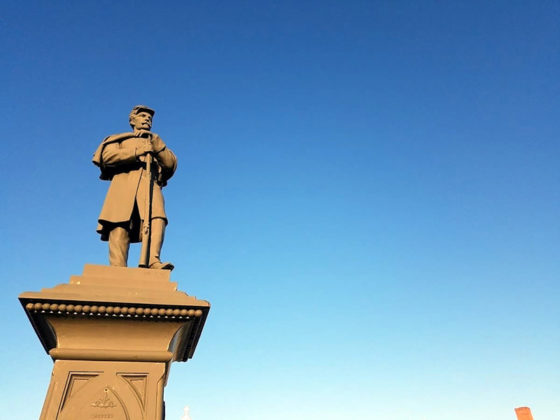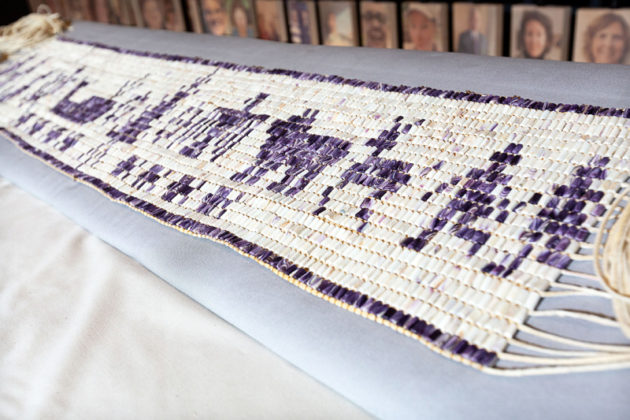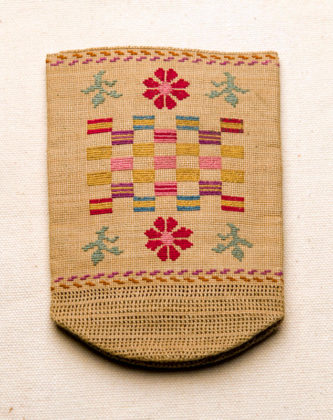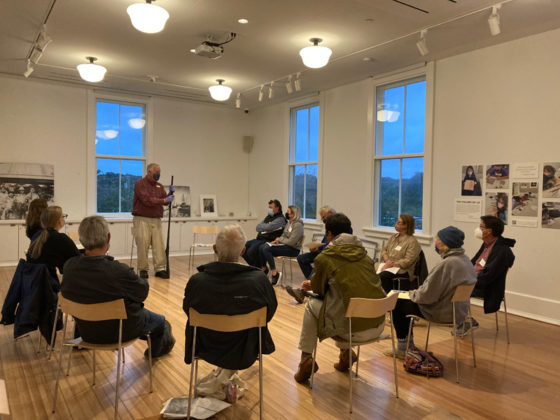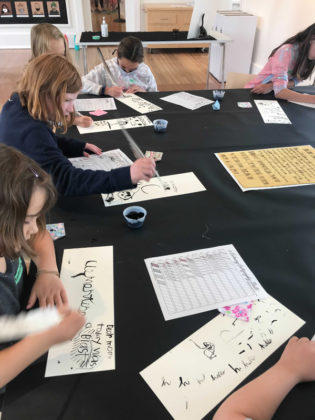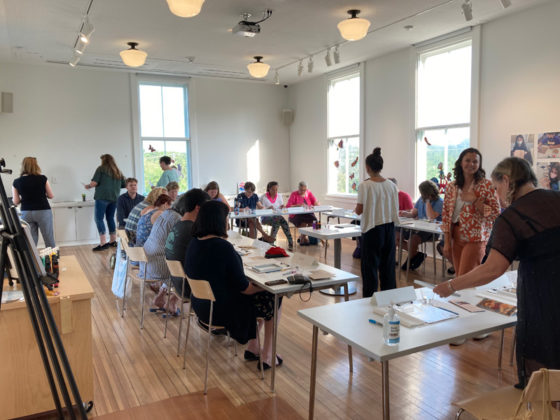It may be winter, but things are hardly quiet at the Martha’s Vineyard Museum — a beacon of culture sitting on the bluff in Vineyard Haven.
In terms of what there is to see, you have the current show, “Learning to Be Modern: Martha’s Vineyard 1921-2021,” which is open through March 27. The show looks at the many causes of transformation over the past 100 years, from steamers to the smell of hot asphalt and glow of electric lights in what’s now Aquinnah, to a global war, political scandal … and a blockbuster movie. The museum deliberately includes ways to interact with visitors, in this exhibit providing notecards that you can write comments on and clip to strings. Executive director Heather Seger says, “A lot of people have been adding them, so it’s been fun to see. Exhibits can be a conversation with visitors, and we want to encourage that as much as possible.”
There also will be an opportunity in “The Chasm Is Not Closed” exhibit for visitors to share their thoughts, feelings, and ideas for what should happen next regarding the plaque from the Oak Bluffs Civil War statue that was removed two years ago, which the museum now owns. The plaque added to the monument in 1925 “in honor of the Confederate soldiers” was removed in 2019 in response to the Martha’s Vineyard NAACP. The show, running from Jan. 12 through April 22, is based on the museum’s research, and aims to convey a deeper understanding of the statue’s complex history and multiple meanings that have come to light, and with them, new questions.
Opening Feb. 11 and running through March 11 is “Wampum: Stories from the Shells of Native America.” Wampum is endemic to the Wampanoag people who have lived in Northeastern America for over 12,000 years. This exhibition unites contemporary Indigenous artists and educators in retelling history from their perspective, and through a powerful piece of traditional art. It features a 1,000-bead wampum belt made in the style and tradition of the Wampanoag people — a belt that tells their story through its unique design.
“In all the writings about King Philip, whose name was Metacom, contemporaries of his wrote extensively about this belt that he wore, and after King Philip’s War, in which he was killed, there was no record of what happened to the belt,” Seger explains. “In reviving his story and what actually happened, there was this movement to create a wampum belt that would be just as important to the community and impressive in terms of its work.”
In part, “Woven,” which runs from March 23 through May 15, is a companion to “Wampum,” but focuses on textile production on the Island, including both the Wampanoag and non-native communities throughout time. It will look at the works from a craft and utilitarian perspective, and tell the stories of the people behind the objects. Here, visitors will have a chance to contribute to a public art project, weaving on the loom in the gallery.
In early April, the museum will open the first exhibit telling the story of the earliest Jewish immigrants to the Island, leading up to the opening of the Hebrew Center 75 years ago. The Hebrew Center’s donated archives provide a rich history of the first Jewish immigrants who came in the early 20th century, including the Cronigs and Brickmans, who still have major businesses here.
“We’re really looking at what it meant to try to continue to practice your religion in a place that was so isolated and far away from others who would have had kosher food and celebrated the high holidays,” Seger shares. “It is the story of early adaptation. I think the Jewish experience here on the Island, especially in those early days, was really similar to what was happening in other places. Then, with the establishment of the Hebrew Center, there were world-famous rabbis coming to the Vineyard in the summer.”
In terms of programs, each month will offer a plethora of both in-person and virtual events. There is the monthly “Hidden Collections,” with the museum’s research librarian, Bow van Riper, in which he pulls from museum’s archives of thousands of documents, postcards, maps, photographs, and other ephemera to tell the stories of Martha’s Vineyard, whether they be complicated, romantic, colorful, or challenging.
In February, Van Riper will also be conducting a four-week class on Martha’s Vineyard whaling history. Then in March, he will teach a course on Martha’s Vineyard and the Atlantic world, about global maritime trade, and will touch upon the international slave trade.
There will be a monthly bring-your-own-picnic brown bag lunch, starting by focusing on the Island’s food history and culture. For something in the early evening, there is “MVM Nightlife” with a glass of wine and a craft related to the museum or Vineyard. January’s craft is marbled-covered journals in the style of Island legend Nancy Luce. There will be vintage postcards and decoupage in February, and corresponding to “Woven” is a textile craft in March. There are parallel Saturday programs geared for kids on one Saturday each month as well, without the accompanying glass of wine.
For the next couple of months, the museum is continuing to offer “Conservation & Consultation: Storing Your Heirlooms the Museum Way.” Here you can join the curatorial staff for a drop-in primer on how to document, handle, and store your treasures at home so that they last for generations to come.
And, if you’re looking for something to do with the kids while visiting the Vineyard, there is always the permanent Hands On History gallery to explore, which, in truth, is equally as engaging for adults.
For more information on the many programs at the Martha’s Vineyard Museum, visit mvmuseum.org.


